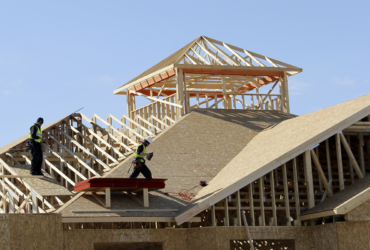Existing-home sales unexpectedly fell to start 2023, according to the National Association of Realtors existing-home sales report.
- M-O-M: Total existing-home sales fell 0.7% from December 2022 to a seasonally adjusted annual rate of 4.00 million in January. While this is a smaller dip than the 2.2% drop in December it is worse than the 2.0% increase economists were projecting.
- Y-O-Y: Existing-home sales are down a whopping 36.9% when compared to January 2022.
Divided Regions. The South starts the new year with the most activity by far thanks to a 1.1% increase from December to an annual rate of 1.82M. This is 46% of all activity across the county.
- The Midwest took the number two spot despite a 5.0% drop from December to an annual rate of 960k followed by the West at 720k (+2.9%) and the Northeast was down to 500k (-3.8%).
Home Prices. The median existing-home price remained in positive territory for at least one more month with an increase of 1.3% to $359,000 in January when compared to the same time last year. This marks 131 consecutive months of year-over-year increases, the longest-running streak on record.
- The West was the first region to report a year-over-year negative number with the median price falling 4.6% from one year ago to $525,200.
- The South is still seeing the most appreciation of all the four regions with the median price up 3.4% increase year-over-year to $332,500.
Inventory Increases Slightly. Total housing inventory registered at the end of January was 980,000 units, up 2.1% from December and 15.3% from one year ago.
- Unsold inventory sits at a 2.9-month supply at the current sales pace, unchanged from December but up from 1.6 months in January 2022.
- Properties typically remained on the market for 33 days in January, up from 26 days in December and 19 days in January 2022.
Analysis. Lawrence Yun, NAR Chief Economist, has some good news for the housing sector. “Home sales are bottoming out…Prices vary depending on a market’s affordability, with lower-priced regions witnessing modest growth and more expensive regions experiencing declines.”
Single-Family Rent Growth Slows For 8th Straight Month

Rent growth for single-family rentals slowed for the 8th straight month to close out 2022, according to CoreLogic’s Single-Family Rent Index.
U.S. single-family rental price growth rose by 6.4% year over year in December, down from 7.5% in November and less than half of the record high (14%) reported in April.
This is the lowest reading since June 2021 when rents were up 5.3% year-over-year.
Lowest Still The Highest. The lower-priced tier is still seeing the most rent appreciation despite an almost full percentage point drop from November. The lower-priced tier reported 9.2% growth year-over-year followed by lower-middle (+7.2%), higher-middle (+6.3%), and higher-priced (5.1%).
All categories are reporting growth levels that are below where they were in December 2021.
Florida Still Hot. Florida held on to the top two spots as every major metro area saw a slowdown in rent growth. Orlando held on to the top spot with the only area still seeing over double-digit growth at 10.8%.
- Miami held on to the second spot at 9.9% followed by Boston up 9.0%, and St. Louis & Atlanta both up 7.5%.
Analysis. Molly Boesel, principal economist at CoreLogic, noted that even though price growth is glowingly precipitously, prices are still well above pre-pandemic levels. “However, while rent growth has been slowing, it still rose at more than double the pre-pandemic rate. Rental price gains began increasing near the end of 2020 and have risen by about an average of $300 in the past two years. Annual single-family rent growth is projected to slow throughout 2023, but it will likely not decline by enough to wipe out gains from the past two years.”
In Other News
- 4 DAYS HERE TO STAY: A large majority of U.K. companies participating in a test of a four-day workweek said they would stick with it after logging sharp drops in worker turnover and absenteeism while largely maintaining productivity during the six-month study…(Wall Street Journal)
- HOW MUCH TO RETIRE? Somewhere between $3 million and $5 million, according to the 553 investors worldwide in the latest MLIV Pulse survey…(Bloomberg)
- SOUTHERN CREDIT PROBLEMS: Medical debt may not be the only force behind the South’s credit struggles, but it appears to be a key contributor. Of the 100 counties with the highest share of adults struggling to pay their medical debt, 92 are in the South…(Washington Post)






Got a Questions?
Find us on Socials or Contact us and we’ll get back to you as soon as possible.